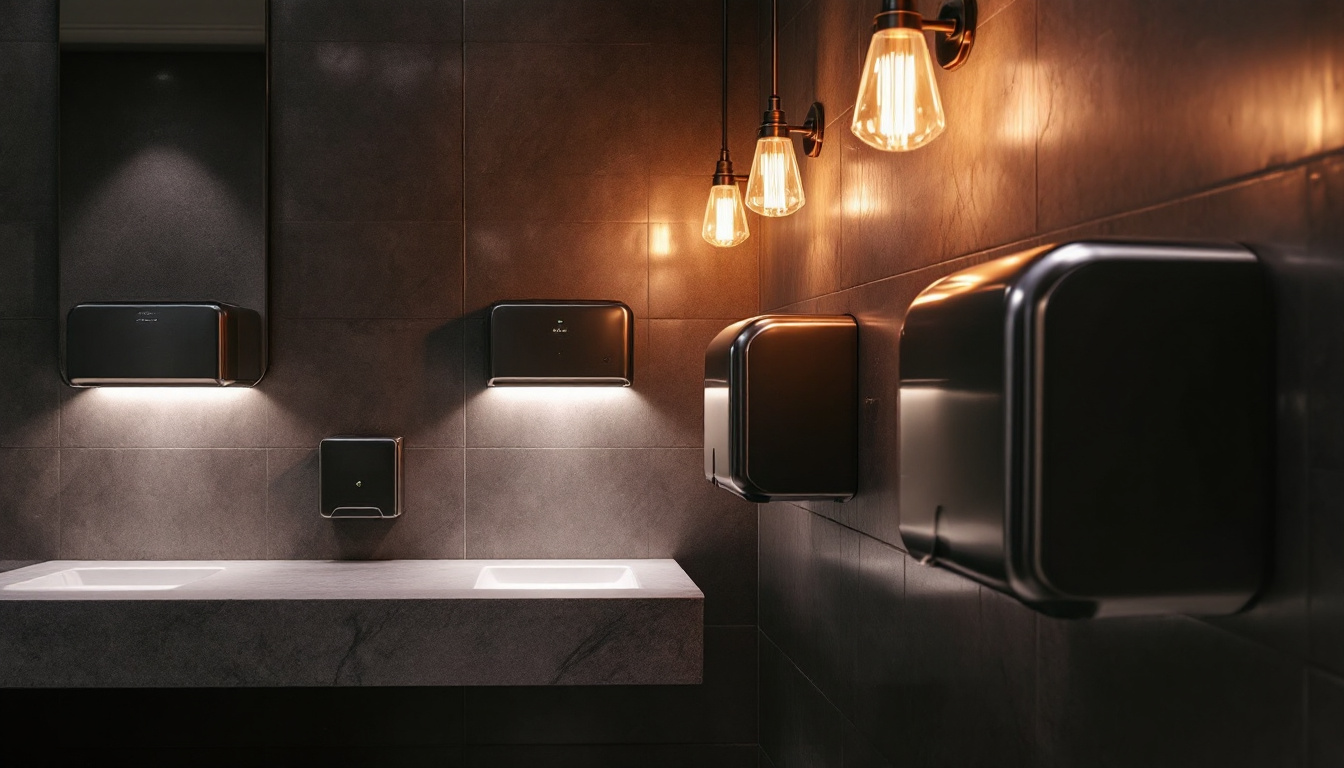In the ever-evolving world of lighting technology, LED lights have emerged as a game-changer, particularly when they come with dimmable features. For lighting contractors, understanding the intricacies of dimmable LED lights is essential for delivering quality installations that meet client expectations. This handbook aims to provide a comprehensive overview of dimmable LED lights, their advantages, installation considerations, and troubleshooting tips.
Dimmable LED lights are designed to adjust brightness levels, allowing users to create the desired ambiance in various settings. Unlike traditional incandescent bulbs, which dim by reducing voltage, LEDs require specific dimming technology to function effectively. This section delves into the fundamental aspects of dimmable LED technology and its benefits.
The dimming of LED lights is achieved through various methods, including pulse width modulation (PWM) and constant current reduction. PWM works by rapidly turning the light on and off, adjusting the duration of the “on” time to create the perception of dimming. On the other hand, constant current reduction lowers the current flowing through the LED, resulting in a decrease in brightness.
It is crucial for lighting contractors to understand these methods, as they influence the choice of compatible dimmers and the overall performance of the lighting system. Not all dimmers are compatible with LED technology, which can lead to flickering or buzzing if mismatched. Additionally, advancements in smart dimming technology have introduced features such as remote control and app integration, allowing users to adjust lighting levels conveniently from their smartphones or smart home systems. This level of control not only enhances user experience but also opens up new possibilities for energy management and automation in modern lighting design.
Dimmable LED lights offer numerous advantages that appeal to both contractors and end-users. First and foremost, they provide energy savings. By reducing brightness, users can decrease energy consumption, leading to lower electricity bills and a reduced carbon footprint.
Moreover, dimmable LEDs enhance the versatility of lighting design. They allow for adjustable lighting levels, making them suitable for various applications, from residential to commercial spaces. Whether creating a cozy atmosphere in a dining room or brightening up a workspace, the flexibility of dimmable LEDs is invaluable. In addition to ambiance, dimmable LEDs can also contribute to improved mood and productivity. Studies have shown that appropriate lighting levels can significantly affect a person’s emotional state and efficiency, making the ability to adjust brightness a key factor in both home and office environments. Furthermore, with the growing trend of energy-efficient design, incorporating dimmable LEDs into new builds or renovations can also increase property value, as more buyers are seeking sustainable and adaptable living spaces.
Selecting the appropriate dimmable LED products is critical for ensuring optimal performance and compatibility. This section outlines key factors to consider when choosing dimmable LED lights.
One of the most significant considerations when selecting dimmable LEDs is their compatibility with existing dimmer switches. Not all dimmers are designed to work with LED technology. Therefore, it is essential to check the specifications of both the LED and the dimmer to ensure they can work together seamlessly.
Lighting contractors should recommend LED-specific dimmers, as they are engineered to handle the unique electrical characteristics of LED lighting. These dimmers often feature a wider range of dimming capabilities and improved performance, reducing the likelihood of flickering or buzzing. Furthermore, many modern LED dimmers come equipped with smart technology, allowing users to control their lighting through mobile apps or voice commands, thereby enhancing convenience and energy efficiency.
When selecting dimmable LEDs, contractors should also consider color temperature and Color Rendering Index (CRI). Color temperature, measured in Kelvin (K), influences the mood and functionality of a space. Warmer tones (2700K-3000K) are ideal for cozy environments, while cooler tones (4000K-5000K) are better suited for workspaces.
CRI measures how accurately a light source renders colors compared to natural light. A higher CRI (above 90) is preferable for applications where color accuracy is crucial, such as in art studios or retail environments. Ensuring that the chosen dimmable LED lights meet these criteria will enhance the overall lighting experience. Additionally, it is worth noting that the perception of color can be affected by the surrounding decor and materials; thus, testing different color temperatures in the actual space can lead to more satisfactory results. By experimenting with various lighting setups, contractors can help clients visualize how different shades and intensities impact the aesthetics of their environment.
Proper installation of dimmable LED lights is vital for achieving the desired performance and longevity. This section highlights key installation considerations that lighting contractors should keep in mind.
When installing dimmable LED lights, it is essential to consider the wiring and electrical load. LEDs generally consume less power than traditional bulbs, allowing for more fixtures on a single circuit. However, it is crucial to ensure that the total wattage does not exceed the circuit’s capacity.
Contractors should also be aware of the wiring type used in the installation. For example, if retrofitting LEDs into existing fixtures, it may be necessary to replace older wiring to accommodate the lower wattage and avoid potential issues. Moreover, the use of compatible dimmer switches is critical; not all dimmers work seamlessly with LED technology, which can lead to flickering or reduced dimming range. Therefore, selecting a dimmer specifically designed for LEDs can enhance the overall performance and user experience.
The placement and spacing of dimmable LED fixtures can significantly impact the effectiveness of the lighting design. For ambient lighting, fixtures should be spaced evenly to create a uniform distribution of light. In contrast, task lighting may require more focused placements to ensure adequate illumination for specific activities.
Additionally, contractors should consider the height at which fixtures are installed. Higher ceilings may require more powerful fixtures or a greater number of units to achieve the desired brightness levels, especially when dimming is involved. It’s also worth noting that the color temperature of the LEDs can influence the perception of space; warmer tones can create a cozy atmosphere, while cooler tones can make areas feel more expansive. Therefore, understanding the intended use of the space and the desired ambiance can guide decisions on both placement and color temperature, ensuring that the lighting not only serves a functional purpose but also enhances the overall aesthetic of the environment.
Despite the advantages of dimmable LED lights, challenges can arise during installation and use. This section addresses common issues and provides troubleshooting tips for lighting contractors.
Flickering and buzzing are two common problems associated with dimmable LEDs. These issues often stem from incompatible dimmers or poor-quality LED products. To resolve flickering, contractors should first ensure that the dimmer is compatible with the LED lights being used.
If the dimmer is compatible but flickering persists, it may be necessary to replace the dimmer with a higher-quality option designed for LED use. Buzzing can often be mitigated by adjusting the dimmer settings or replacing the dimmer altogether. It’s also worth noting that the electrical wiring in the building can contribute to these issues; loose connections or outdated wiring may exacerbate flickering and buzzing. Therefore, a thorough inspection of the wiring should be conducted to rule out these potential causes.
Inconsistent dimming performance can occur when multiple LED fixtures are connected to a single dimmer. This can lead to some lights dimming more effectively than others. To address this issue, contractors should ensure that all fixtures are of the same brand and model, as variations in design can affect performance.
Additionally, using a dimmer with a wider load range can help accommodate multiple fixtures, ensuring a more consistent dimming experience across the board. It’s also beneficial to consider the total wattage of the connected fixtures; exceeding the dimmer’s capacity can lead to uneven dimming. Furthermore, the location of the dimmer switch in relation to the fixtures can impact performance as well. For instance, longer runs of wire can introduce resistance, which may affect how the lights respond to dimming commands. Proper planning and installation can mitigate these issues significantly.
The lighting industry is continually evolving, with new technologies and trends emerging regularly. Staying informed about these developments is crucial for lighting contractors to remain competitive. This section explores some future trends in dimmable LED technology.
Smart lighting technology is on the rise, allowing users to control their lighting through mobile apps or voice commands. Dimmable LEDs are increasingly being integrated into smart home systems, enabling users to adjust brightness levels remotely or set schedules for automated lighting.
Contractors should familiarize themselves with smart lighting products and their installation requirements, as this trend is likely to gain further traction in both residential and commercial markets.
As energy efficiency becomes a more pressing concern, manufacturers are continuously working to improve the efficiency of dimmable LED lights. Innovations in chip technology and design are leading to even lower energy consumption while maintaining high-quality illumination.
Lighting contractors should keep an eye on these advancements, as they will not only benefit their clients but also contribute to a more sustainable future.
Dimmable LED lights have revolutionized the lighting industry, offering energy-efficient and versatile solutions for various applications. For lighting contractors, understanding the technology, selecting the right products, and ensuring proper installation are essential for delivering high-quality lighting solutions.
By staying informed about the latest trends and troubleshooting common issues, contractors can enhance their expertise and provide clients with exceptional service. As the demand for dimmable LED lighting continues to grow, embracing this technology will undoubtedly lead to a brighter future for both contractors and their clients.
Ready to elevate your lighting projects with the best dimmable LED technology? Look no further than LumenWholesale, where we specialize in providing contractors with the highest quality, spec-grade lighting products at unbeatable wholesale prices. Say goodbye to local distributor markups and hello to superior lighting solutions that meet the strictest industry standards. With our commitment to hassle-free bulk buying and free shipping, you can trust that you’re getting premium lighting at the best value — without any hidden fees. Make the smart choice for your lighting needs and experience the LumenWholesale difference today.

Discover the latest trends in 8ft LED lighting that every savvy contractor should know.

Discover how corn bulbs are revolutionizing the lighting industry and boosting profits for contractors.

Discover how hand dryer commercials can inspire innovative lighting solutions.

Discover why auto shop lights are indispensable tools for lighting contractors.